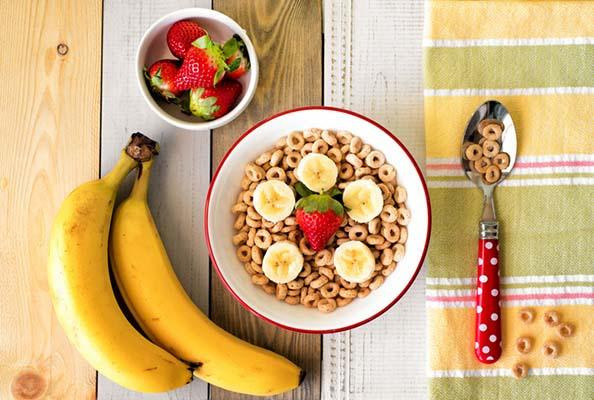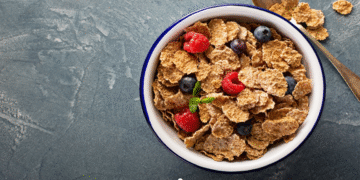Breakfast cereal has been a staple in millions of households for decades. For many, it’s the go-to option on busy mornings: just pour, add milk, and eat. Its convenience, affordability, and taste make it appealing to both children and adults. But while colorful packaging and celebrity endorsements often portray cereal as a healthy start to the day, the reality may be far less wholesome.
In this article, we’ll take a closer look at the nutritional value of popular cereals, the hidden downsides, the truth behind marketing claims, and how you can make smarter breakfast choices.
Cereal is especially popular in Western countries, where shelves are lined with dozens of varieties. In the US alone, surveys suggest that more than a quarter of children eat ready-to-eat cereal most mornings, and around half of adults consume it at least weekly. Iconic brands like Cheerios, Corn Flakes, and Frosted Flakes have become household names, often tied to nostalgia and tradition.
Yet, popularity doesn’t always equal nutritional value. Just because a food is commonly eaten, doesn’t mean it’s the healthiest option.
What’s Really in Your Bowl?
To answer whether your cereal is healthy, you need to look at its ingredients and nutrition facts label. Unfortunately, many breakfast cereals contain more sugar than dessert items. Here are some common elements to watch out for:
Sugar Content
Many popular cereals contain anywhere from 10–20 grams of sugar per serving. For children, who often pour double or triple the “official” serving size, this can mean starting the day with the equivalent of several cookies. The World Health Organization recommends that added sugars make up less than 10% of daily calories, yet one bowl of sugary cereal can hit half that limit.
Refined Grains
While the word “whole grain” may appear on the box, many cereals are heavily processed. Refining grains strips them of fiber and important nutrients, leaving behind mostly starch that spikes blood sugar levels.
Low Protein
Without milk or yogurt, cereal itself contains very little protein — often just 2–3 grams per serving. Protein is important for satiety and muscle repair. This means that cereal alone won’t keep you full for long.
Fiber: Sometimes Missing
Fiber is one of the key nutrients that can make cereal healthy, but ironically, many varieties marketed to children contain almost none. Fiber helps digestion, controls blood sugar, and supports heart health.
Additives and Preservatives
Food dyes, artificial flavors, and preservatives are often added to make cereal more appealing. While some are considered safe, many parents prefer to limit unnecessary additives in their children’s diet.
Ever notice that cereal boxes often list their nutrition facts per serving of ¾ cup or 1 cup? That’s much smaller than what most people actually pour into their bowl. In reality, the average person consumes closer to 2 cups or more — doubling the sugar, calories, and sodium intake instantly.
So when you think you’re eating “just 120 calories” from cereal, you may actually be consuming 300–400 calories, especially if you go back for seconds.
Walk down any cereal aisle, and you’ll see eye-catching claims:
- “Heart Healthy”
- “Good Source of Fiber”
- “Made with Whole Grain”
- “Part of a Complete Breakfast”
These claims can be misleading. For example, a cereal labeled as “whole grain” may still contain high amounts of added sugar and very little fiber. “Heart healthy” claims are often based on the inclusion of oats, but if the oats are drowned in sugar, the benefit is questionable.
The phrase “part of a complete breakfast” usually appears in ads showing cereal alongside fruit, milk, and eggs — but of course, it’s the other foods providing most of the nutrition, not the cereal itself.

While exact numbers vary by country and brand, let’s look at some of the most popular cereals and what’s really in them:
Frosted Flakes – Sweet and crunchy, but one serving can contain more than 12g of sugar. Without added protein or fiber, this is essentially a bowl of sugar-coated corn.
Cocoa Puffs – Marketed to kids, but often has less nutritional value than a chocolate bar. High sugar, low fiber, minimal protein.
Fruit Loops – Brightly colored and fun, but food dyes and 10+ grams of sugar per cup are concerning.
Raisin Bran – Marketed as healthy, but because raisins are sugar-coated and the flakes are sweetened, it often has more sugar than some “kids’ cereals.”
Cheerios – A relatively better option with low sugar and some fiber, especially in the plain variety. However, flavored versions like Honey Nut Cheerios contain a significant sugar boost.
Corn Flakes – Simple and lower in sugar, but also very low in fiber and protein. Often not filling unless paired with a protein source.
Not all cereals are bad. Some brands focus on whole grains, high fiber, and lower sugar content. Here are some qualities of healthier cereals:
- At least 3–4 grams of fiber per serving
- Less than 6 grams of sugar per serving
- At least 5 grams of protein (especially when paired with milk or yogurt)
- Minimal additives and artificial colors
Options like plain oatmeal, shredded wheat, or bran-based cereals are closer to what nutritionists recommend. Pairing them with nuts, seeds, or fruit can further boost nutrition.
Eating high-sugar cereals regularly can lead to long-term health problems:
- Obesity – Sugary cereals are calorie-dense but not filling, encouraging overeating.
- Type 2 Diabetes – Repeated blood sugar spikes may increase insulin resistance.
- Dental Issues – Sugary residues feed bacteria that cause cavities.
- Nutrient Deficiency – If cereal replaces more balanced meals, people may miss out on protein, healthy fats, and essential micronutrients.
If you love cereal (and many of us do), here are some tips to keep it in your diet without overdoing the sugar:
- Measure portions instead of free-pouring.
- Choose low-sugar, high-fiber options.
- Add your own toppings like fresh fruit, nuts, or seeds instead of relying on sugar.
- Pair with protein such as milk, soy milk, or Greek yogurt to increase satiety.
- Reserve sugary cereals for treats instead of daily breakfast.
Breakfast cereal is one of those foods that feels comforting, nostalgic, and incredibly easy to prepare. But when it comes to health, the truth is complicated. While not all cereals are created equal, many of the most popular ones are closer to desserts than balanced meals.
If you want cereal to be part of your diet, focus on high-fiber, low-sugar options and pair them with protein-rich foods. And don’t let flashy packaging or celebrity endorsements fool you — the nutrition label tells the real story.
Ultimately, the healthiest breakfast is one that balances protein, fiber, and healthy fats — and for most people, that means looking beyond the cereal aisle.
















